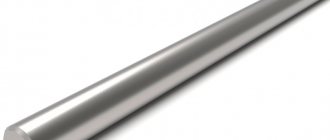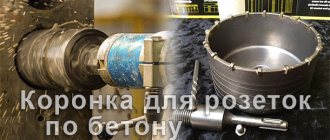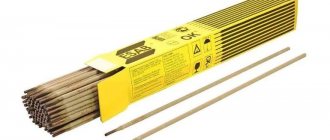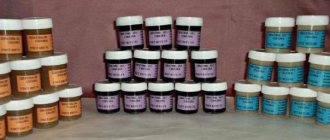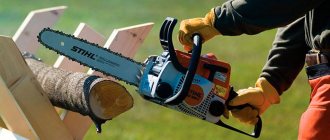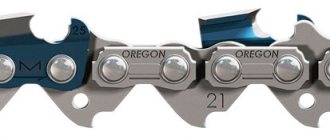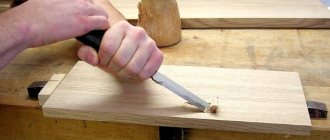Modern construction technologies involve the use of new materials with improved characteristics. One of the latest developments in scientific and construction organizations is plastic reinforcement. Thanks to its complex of operational properties, it successfully competes with metal rods, which are gradually destroyed as a result of corrosion processes. Glass reinforcement is used to provide an increased safety margin for concrete structures in contact with fresh and salt water, as well as aggressive environments.
Foundation slabs
The technology of reinforcing foundation slabs for low-rise construction of no more than three floors using fiberglass composite reinforcement occurs by replacing metal reinforcement with fiberglass according to the table of equal strength replacement.
Correct replacement with fiberglass reinforcement is guaranteed to lead to significant savings in money, because Fiberglass reinforcement is cheaper than metal. The principle of reinforcing foundation slabs with fiberglass reinforcement does not differ from reinforcement with metal reinforcement, but leads to significant savings in installation time.
When replacing metal reinforcement with fiberglass reinforcement, there is no need to reduce the reinforcement pitch.
If it is necessary to lengthen the fiberglass reinforcement rod, the connection occurs in an overlap. The length of the overlap is from 20 to 50 cm.
Knitting of fiberglass reinforcement is carried out with a knitting wire, cutting of fiberglass reinforcement is carried out with a grinder - a grinder.
Scope of use
Basalt-plastic, carbon-fiber, combined and glass reinforcement are used for various purposes:
the production of composite types of concrete intended for the construction of monolithic walls of residential and industrial buildings;
Today, in private housing construction, plastic reinforcement for foundations is increasingly used.
- construction of foundations and production of foundation slabs;
- strengthening brickwork in low-rise construction;
- construction of port facilities, shore protection structures, offshore facilities;
- arrangement of road surfaces and strengthening of slopes;
- construction of rail and highway fencing;
- production of concrete products requiring prestressed reinforcement (pillars, slabs, sleepers, traverses);
- construction of overpasses, bridge structures, overpasses;
- creating earthquake-resistant reinforcement contours for various structures.
Strip foundations
Reinforcement of a strip foundation using fiberglass reinforcement occurs by replacing metal reinforcement with fiberglass reinforcement according to the equal-strength replacement table.
Table of equal replacement of metal reinforcement with composite fiberglass reinforcement
| Metal class A-III (A400C) | Composite polymer fiberglass reinforcement OZKM (AKS) |
| 6 A-III | 4 AKS |
| 8 A-III | 5.5 AKS |
| 10 A-III | 6 AKS |
| 12 A-III | 8 AKS |
| 14 A-III | 10 AKS |
| 16 A-III | 12 AKS |
| 18 A-III | 14 AKS |
| 20 A-III | 16 AKS |
Correct, equal-strength replacement of metal reinforcement with fiberglass will allow you to receive economic benefits of up to 45%
(savings 2 times).
When replacing metal reinforcement with fiberglass, there is no need to increase the number of layers of reinforcement and the number of rods in one layer.
If it is necessary to lengthen the fiberglass reinforcement rod, the connection occurs in an overlap. The length of the overlap is from 20 to 50 cm.
Knitting of fiberglass reinforcement is also carried out using a knitting wire; cutting of fiberglass reinforcement is carried out with a “grinder”.
How plastic fittings are made
The production process of polymer reinforcement is carried out on automated lines and includes the following stages:
- Filling the feed module hopper with a polymer composition.
- Feeding composite fibers and ensuring uniform tension.
- Heat treatment of the material to remove water and oil inclusions.
- Loading polymer fibers into a tank with heated binding ingredients.
- Pulling the impregnated threads through a nozzle that winds them.
- Polymerization of the starting material in an oven at high temperature.
- Cooling the resulting rods and cutting them into pieces of the required sizes.
The characteristics of the equipment guarantee the quality of the resulting products.
Reinforcement of industrial concrete floors
Reinforcement of industrial concrete floors using fiberglass composite reinforcement occurs by replacing metal reinforcement with fiberglass reinforcement according to the equal-strength replacement table.
Correct replacement of fiberglass reinforcement when reinforcing industrial concrete floors also leads to significant savings in money, because Fiberglass reinforcement is cheaper than metal.
The principle of reinforcement with fiberglass reinforcement does not differ from reinforcement with metal reinforcement, but leads to significant savings in installation time.
When replacing metal reinforcement with fiberglass reinforcement, there is no need to reduce the reinforcement pitch.
If it is necessary to lengthen the fiberglass reinforcement rod, the connection occurs in an overlap. The length of the overlap is from 20 to 50 cm.
Knitting of fiberglass reinforcement is carried out with a knitting wire, cutting of fiberglass reinforcement is carried out with a grinder - a grinder.
The feasibility of using SPA during the operation of power lines
In 1969, through the joint efforts of specialists from the ISiA “Gosstroy” of the Byelorussian SSR and the SPI “Selenergoproekt” (Moscow), large-scale studies of electrically insulating traverses for power transmission line supports (10 and 35 kW) were carried out. Already in 1970, a pilot site was put into operation in Kostroma with installed 10 kW power transmission line supports made using fiberglass-concrete traverses.
After 2 years (1972), an experimental site was opened in the Stavropol region with installed power transmission line supports (35 kW), made using electrically insulating traverses, for the manufacture of which plastic reinforcement and lightweight concrete were used. The structure consisted of 3 prestressed beams, bolted to a steel plate and secured with clamps to the apex reinforced concrete supports.
In 1975, in Grodno and Soligorsk, 2 pilot sections of power transmission lines with a capacity of 10 kV with fiberglass-reinforced concrete three-beam traverses were also put into operation. A complex prefabricated structure was installed: 2 horizontal prestressed elements with wires and 1 vertical element with a wire on top. The prefabricated cross beam was secured to the concrete support using steel clamps with plates. The basis of the traverses is electrically insulating concrete reinforced with 4 plastic reinforcement rods with a diameter of 6 mm.
**The use of non-insulating traverses made of fiberglass concrete provided a significant economic effect. The savings amounted to 61.01 rubles for each kilometer of power lines.
Blind areas around buildings
A blind area is a strip with a width of 0.6 m to 1.2 m, which is adjacent to the foundation or base of a building with a slope.
The slope of the blind area must be at least 1% (1 cm per 1 m) and no more than 10% (10 cm per 1 m).
It is recommended to construct a blind area around the building using fiberglass reinforcement, since the main task of the blind area is to drain surface rain and melt water from the walls and foundation of the house. A blind area using fiberglass reinforcement will last several times longer, since fiberglass reinforcement has high anti-corrosion properties, which prevents the occurrence of cracks in concrete.
Advantages of glass fittings
Developers are interested in what the pros and cons of plastic fittings are. Like all building materials, fiberglass reinforcement has disadvantages and advantages. The main advantages of glass fittings:
- increased safety margin;
- acceptable price level;
- light weight of rods;
- corrosion resistance;
- resistance to aggressive environments;
- reduced thermal conductivity;
Plastic reinforcement is used more and more often in construction today, due to its unique characteristics.
- environmental cleanliness;
- long period of operation;
- ease of machining;
- convenient delivery option;
- possibility of assembling frames without welding;
- preservation of properties at low temperatures;
- dielectric characteristics.
Thanks to a set of advantages, composite rods are popular.
Armopoyas (seismic belt) between floors of brick or block buildings
The use of fiberglass composite reinforcement when reinforcing an armored belt (seismic belt) between floors of brick or block buildings, due to its high strength characteristics, increases the spatial rigidity of the building and protects the foundation and walls from cracks caused by uneven settlement and frost heaving of the soil.
Binder for brickwork
To increase the strength of the brickwork and maintain the same thickness of the seams, it is necessary to use rods made of fiberglass reinforcement with diameters F4 and F6, instead of metal mesh.
The thickness of the diameter of the reinforcement depends on the thickness of the joint in the brickwork.
Replacing metal masonry mesh with fiberglass rods will reduce the cost of reinforcing material by more than 5 times.
Also, the use of fiberglass rods in brickwork will significantly reduce heat loss, since fiberglass reinforcement conducts heat poorly, several times worse than metal.
Flaws
Among the main disadvantages of composite reinforcing materials, experts call:
- low maximum temperature of use, not exceeding 60-70°C;
- poor mechanical stability under lateral loads;
- the impossibility of bending with a small angle of curvature and the need to use special elements.
It should be noted that there is no regulatory framework for the use of polymers for concrete reinforcement and, often, unreliable technical data from the manufacturer of the material. This makes calculations difficult and forces structures to be assembled with a safety margin.
Binder for laying walls made of blocks/bricks, for monolithic walls
To increase strength when laying walls made of blocks/bricks, for monolithic walls and to regulate the thickness of seams, it is recommended to use fiberglass rods with diameters F4, F6 and F8 instead of metal mesh. The thickness of the diameter of the reinforcement depends on the thickness of the seam during laying. Replacing metal masonry mesh with fiberglass rods will reduce the cost of reinforcing material by more than 5 times.
Also, the use of fiberglass rods will significantly reduce heat loss, since fiberglass reinforcement conducts heat poorly, several times worse than metal.
Glass reinforcement - types of rods
Plastic reinforcement is made from different types of threads. The following types of composite rods are used:
- fiberglass, abbreviated as ASP. The core is made of glass fibers that are highly resistant to moisture. The products are used to increase the strength of foundations and road surfaces;
- basalt plastic, marked ABP. Easily distinguished by the black color of basalt fibers. Basalt plastic rods are superior to fiberglass rods in their ability to withstand tensile loads, as well as the magnitude of elastic deformation;
- Carbon fiber rods marked UGP are made on the basis of carbon, used in the production of concrete composites. The increased level of costs for purchasing carbon fiber reinforcement is compensated by the working properties of the material, as well as the ease of working with it;
- combined. Reinforcement with the ACC index is made of basalt and glass fibers and is characterized by increased strength properties. ACC polymer rods on a glass-basalt base are used for special purposes.
The choice of composite rods is carried out depending on the complexity of the tasks.
There are different variations of fitting models, some of which are quite unusual
Combination with metal in floor slabs
The floor slab is reinforced in two layers. The load on the floor slab comes from the top down and is distributed across the entire coverage area. Accordingly, the main working reinforcement is located in the lower layer and experiences high tensile loads. The top layer mainly receives compressive loads.
In this case, fiberglass reinforcement is used in combination with metal reinforcement. The top layer must be made of fiberglass reinforcement, the bottom - from metal.
In the mesh itself, the fiberglass composite reinforcement must have a solid appearance without any breaks. If the floor is reinforced using F10 fiberglass reinforcement, then an overlap of 400 mm must be made. All reinforcement joints should be placed in a checkerboard pattern.
Advantages
Compared to steel, fiberglass reinforcement has many advantages:
- light weight;
- corrosion resistance;
- low thermal conductivity;
- low electrical conductivity;
- does not shield structures from electromagnetic waves;
- convenient for transportation;
- environmentally friendly;
- high tensile strength.
However, all these advantages in private housing construction have practically no practical use.
The weight of a meter of reinforcement is really small. But the need for it in private housing construction is calculated not in tons, but in tens of kilograms. Compared to other materials used in construction - brick, concrete, reducing the weight of reinforcement will have a slight effect on the weight of the entire house structure.
Corrosion resistance when used in monolithic reinforced concrete is irrelevant, since cement creates an alkaline environment in concrete. Metal, on the contrary, corrodes in an acidic environment, so steel rods filled with concrete are sufficiently protected from corrosion.
Thermal conductivity and electrical conductivity are also of little importance for private houses, since almost no one builds walls from monolithic reinforced concrete.
Shielding significantly affects the propagation of electromagnetic waves only if the reinforcement density in the walls exceeds 50%. This practically never happens in individual houses.
Flexible connections
A flexible connection is used to connect the interior wall through the insulation (and air layer) to the cladding wall into a single unit in a three-layer wall system.
Composite flexible connections produced by OZKM LLC are rods made of fiberglass with a length of 200 to 600 mm with a periodic relief surface or rods with a circular cross-section (depending on the design solution). Thanks to this, flexible connections “OZKM” have high adhesion to concrete and additional protection from the aggressive effects of the alkaline environment of concrete.
Flexible connections are used:
- for brickwork (Ф 6 mm),
- for insulation of monolithic buildings (Ф 6 mm),
- for blocks (Ф 4 mm),
- for panel housing construction (Ф 6 mm).
On our website you can learn more about composite flexible ties and order them.
Plastic fittings - features of building materials
Plastic reinforcement, designed to increase the strength of concrete structures, has its own characteristics.
The main difference of this material is its light weight, as well as its two-layer construction:
- the inner layer is the core of the rod, consisting of longitudinal threads filled with a composite mixture. The core increases the resistance of the material to tensile and compressive loads;
- the outer layer is formed by a group of threads twisted in a spiral. The characteristic arrangement of the outer fibers increases the resistance of the rods to torsion, and also improves the contact of the polymer reinforcement with concrete.
Polymer threads improve the performance properties of composite rods, which successfully compete with standard metal reinforcement. Distinctive features of glass fittings:
- weight reduced by 4-5 times compared to steel rods. The main advantage of the material makes it easier to work and reduce costs associated with transportation;
- The polymer material is twice as durable as steel in terms of tensile strength. This makes it possible to provide the required safety margin with reduced parameters of the outer diameter;
- resistance to corrosive destruction and neutrality to aggressive liquids. Polymer rods retain their properties in a humid environment;
- reduced thermal conductivity coefficient compared to steel. Polymer material allows for the construction and repair of houses, preventing the formation of cold bridges;
- possibility of assembling load-bearing frames without electric welding. This simplifies the process of fixing the bars and also reduces costs.
Fiberglass is used to produce this construction reinforcement
Design features and operational characteristics allow the use of glass reinforcement instead of steel rods to solve a wide range of problems.
Strip foundations for fences
Strip foundations are provided for the following types of fences: a fence with brick pillars, a wrought-iron metal fence and a fence made of timber or corrugated sheets with load-bearing metal posts.
Reinforcing the foundation for a fence using fiberglass reinforcement is very profitable. Due to the high strength characteristics of fiberglass reinforcement and low loads, when reinforcing the foundation for a fence, composite reinforcement with diameters F4 and F6 is most often used.
The reinforcement technology is no different from the technology when using metal reinforcement, but is much cheaper and faster in time. Longitudinal rods of fiberglass reinforcement are laid at the bottom of the dug trench on supports 4-7 cm high. The outer rods of fiberglass should extend 6-8 cm from the walls of the trench.
Transverse reinforcement and vertical posts are usually knitted in increments of 400 mm.
The top row of longitudinal reinforcement is attached to the posts so that it is 5-7 cm below the top level of the trench. Then the transverse fiberglass reinforcement of the top row is laid.
History of the use of SPA in foreign countries
In the 80s of the twentieth century in Germany (Dusseldorf) plastic reinforcement was first used to strengthen concrete bridges. A 15 m wide vehicular-pedestrian two-span bridge with fiberglass-reinforced rods with spans of 21.3 and 25.6 m had a maximum stationary load for transport of up to 600 kN. Such parameters significantly exceeded those of all structures that had previously been used in the country.
In Japan in 1986 and 1988 Bridges with a fundamentally new reinforcement technology using carbon fiber rods were put into operation. Also, non-metallic reinforcement began to be intensively used in the process of construction and reconstruction of Japanese ports and piers.
In the USA, the 90s of the last century are the starting point for the use of high-tech fiberglass reinforcement Parafil (the rods were first used in the construction of the foundation and reconstruction of floors as part of the restoration project of the San Antonio Hospital in Texas). The high corrosion resistance and strength of ropes made of plastic reinforcement determine the use of new reinforcing material in conditions of increased chemical activity and humidity, in which steel elements are completely destroyed. Ropes ensure the production of beams, slabs, and structural elements that do not lose their properties when used in sea water.
According to the experience of European countries, Parafil plastic reinforcement is actively used in the construction of concrete bridges (for reinforcing spans, beams, connecting individual structural elements). Also, reinforcing ropes have found wide application in the repair of concrete structures in different states, as cable stays on platforms for gas and oil production in the open sea.
The UK is rightfully considered an innovator in the use of spas. The English company Statestyle, Ltd has developed a new technology for the production of Fibremesh-G meshes made of fiberglass: a special impregnation from a mixture of polyester resins is applied to the surface of the structure made of plastic rods, which, when hardened, form a dense protective layer that is not subject to destruction. Grids were actively used in construction when performing general construction and finishing works.
Concrete areas for driving and parking.
Before reinforcement begins, a 5 cm layer of crushed stone is poured on top of the concrete pad onto the sand cushion and compacted. Fiberglass reinforcement strengthens the concrete structure, so when constructing a parking lot you cannot do without it. Concreting of the area for driving and parking a car is carried out using fiberglass reinforcement, which is cut into rods of the required length. It is recommended to use fiberglass reinforcement with diameter F6.
The reinforcement frame is made directly at the installation site and does not take much time. Fiberglass rods are placed crosswise and tied with wire at the joining points.
Recommendations for choosing products
Criteria for selecting a spa for construction work:
- compliance of the product diameter with the declared values;
- quality of winding of the outer layer;
- Availability of quality certificates and material test reports.
If after a visual inspection it turns out that the color of the fittings is darker than that declared by the manufacturer, then it is not recommended to purchase such products. Darkening of the spa means a violation of the temperature conditions during manufacturing, the product is considered burnt, and its technical characteristics do not correspond to the declared ones.
